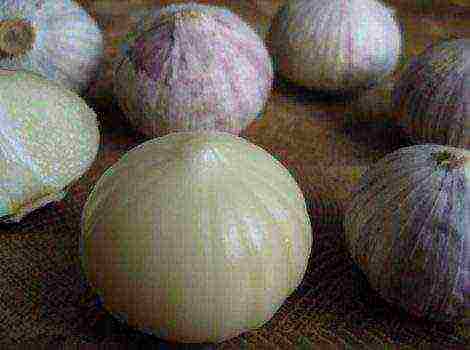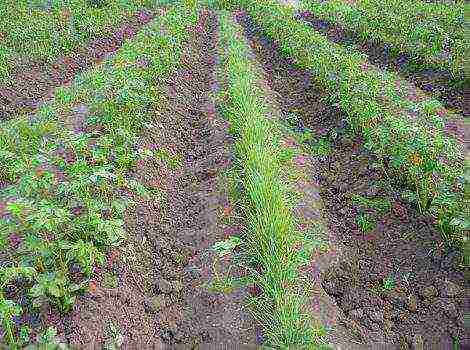Content
- 1 Proper planting and care of beans outdoors
- 1.1 When to plant beans outdoors
- 1.2 Are beans afraid of frost
- 1.3 The most popular varieties for planting
- 1.4 Planting rules and agricultural techniques for growing in open ground
- 1.5 Leaving after disembarkation
- 1.6 Pests and prevention
- 1.7 The correct timing of harvesting in the country or in the garden
Proper planting and care of beans outdoors
Beans are among the top ten most useful vegetables, so when choosing crops for growing in your garden, they always have a place. In order for the time and money spent to be rewarded with a generous harvest, it is necessary to familiarize yourself with the basic rules of agricultural technology, planting and care for open field cultivation.
When to plant beans outdoors
The planting of beans is planned for May month. You should focus on weather conditions and the correct temperature regime in the soil, which is indicated by indicators 12-15 degrees (at a depth of 10 cm). According to the popular calendar, this period coincides with the flowering of chestnuts.
Erect varieties need to be planted first, and after a week you can start climbing varieties. They plan to plant a bush type of legumes at the beginning of July... This can be done on the beds from which the harvests of early-maturing vegetables have already been harvested.
Experienced gardeners carry out planting work in several stages: from mid-May to early July with an interval of at least 10 days.
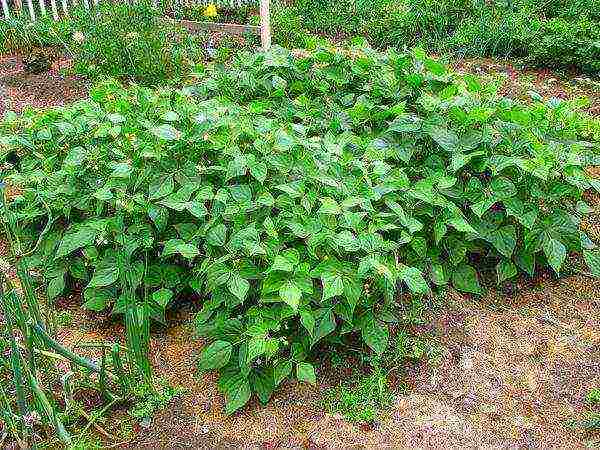
Are beans afraid of frost
Beans are a thermophilic culture, so planting is best done in spring. in the second half of Maywhen the threat of frost has passed. Young shoots are afraid even of cold winds, which is why many gardeners find its place under apple trees or along the fence.
The minimum temperature that bean sprouts can withstand does not exceed the mark -3-4 degrees... If the frosts were short-lived, the beans will survive, but their development will be slowed down and yield decreases.
Agrotextile or film, which are used for construction, will help to change the situation. temporary shelter.
The most popular varieties for planting
Varietal diversity complicates the choice. If there are difficulties in determining the range, it is recommended to give preference to proven varieties that are adapted to the climate and weather conditions of the region.
The best varieties for the Moscow region, Ukraine and Belarus
Moscow White Green Pod 556
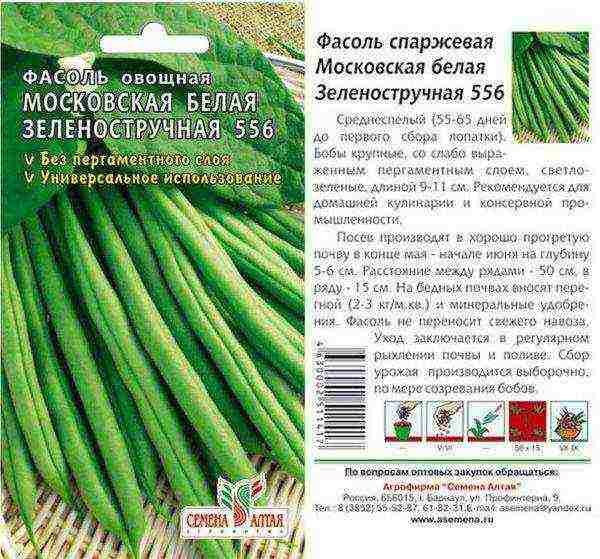
Plant mid-early ripening period, from sowing to harvesting 100 days... The bush is formed at a height of only 25 cm, the fruits have a parchment layer, but very thin. The culture is unpretentious, resistant to a humid environment and drought.
Nomad
Curly variety mid-early ripening. The egg-shaped bob is ocher in color with a pale purple pattern. The fruit is free of parchment and fibers, which makes the structure tender and soft. The plant is tolerant to anthracnose, gray rot.
For the Urals and the middle lane
Oran
She R - early maturing ripening beans 80-90 days, recommended to plant in a country house in central Russia. The height of the bushes is from 35 to 56 cm, the fruits are distinguished by high taste.
Pink
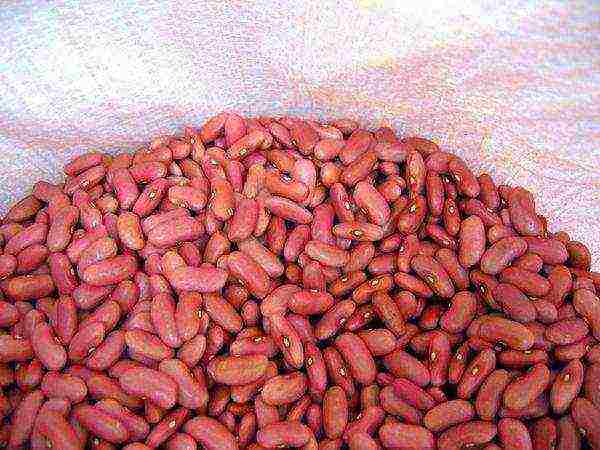
Harvesting begins in 65-85 days after seed germination. The climbing bush reaches a height of up to 3 m, so it needs support.
The marbled pink beans are free of parchment and fibers, which gives them a delicate texture. Purple streaks and streaks are visible on the fruit. The application is universal, in any form the beans retain their unique taste.
For Siberia
Winner
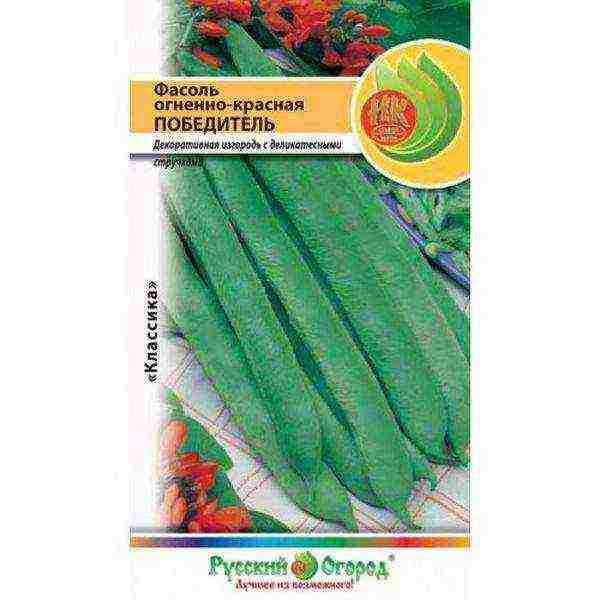
Culture is different high yield and the nutritional qualities of the fruit. The length of the pods is about 30 cm, the beans are large. Cold resistance and strong immunity make it possible to cultivate and grow a plant in Siberia.
Feature: lashes with beautiful fiery red flowers can be used as a decorative hedge.
Oil king

Bush type of beans with a ripening period 1.5 months... Delicate and pleasant taste of tubular fruits will not leave indifferent any gourmet. The length of the pod part is about 25 cm. The use of the crop is universal: dry harvesting, freezing, canning.
Planting rules and agricultural techniques for growing in open ground
Seed preparation
Soak first in a weak solution of potassium permanganate for about 20 minutes. After the procedure, the beans are washed with clean water and again need to be soaked in infusion of wood ash for 2 hours.
At night before sowing, the pea beans are wrapped in a damp cloth for germination at home. And 5 minutes before sowing into the soil, they are dipped into a boric acid solution. This will protect the plant from diseases and pests.
Preparing the soil and choosing a place for sowing
For planting a crop is selected well lit place, but without drafts and strong winds, planting through seedlings is practically not used. The type of soil does not play a big role, but experienced gardeners noted that beans develop worst of all, they can germinate and bear fruit poorly on clay soils. This is due to poor moisture permeability, which causes the seeds and roots to rot.
In general, the preparatory process for the formation of the garden consists in digging the soil to the depth of the shovel bayonet... At the same time, fertilizers are introduced: per 1 m2 add 4 kg of humus or compost, 2 tbsp. l. dolomite flour, 1 tbsp. l. ammonium nitrate and 2 tbsp. l. superphosphate.
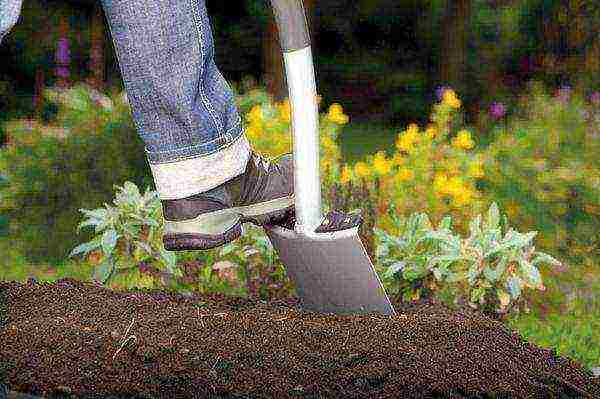
Another option for enriching the soil with nutrients involves the use of ½ compost (humus), 30 gr. superphosphate, 20 gr. wood ash per 1 m2.
When determining a place for planting beans, those crops that were grown on it last season are taken into account.
Planting scheme and depth
Shrub varieties of culture are planted according to the scheme:
- seed placement depth - somewhere 5-6 cm;
- distance between holes in a row - 20-25 cm;
- aisle - 40 cm.
Curly varieties are planted in a slightly different way:
- seed placement depth - 5-6 cm;
- spacing between holes in a row - 25-30 cm;
- aisle - 45-50 cm.
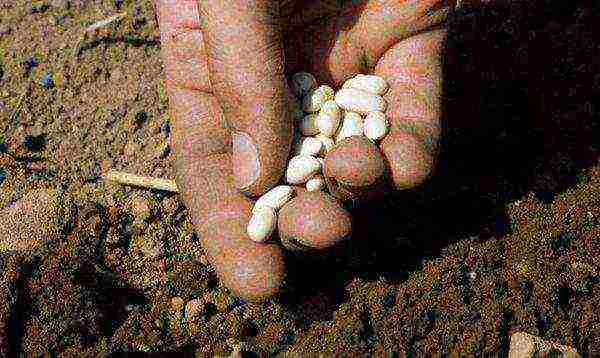
5-6 seeds are immersed in each hole. After formation on the seedlings, one leaf at a time, you need to leave only 3 seedlings, remove the rest or carefully transplant.
According to lunar calendar for 2018 planting beans is recommended:
- March - 20-23 days;
- April - 6-9, 19, 20, 23-26;
- May - 7-10, 19-24;
- June - 4-7 numbers.
Leaving after disembarkation
Unpretentious beans do not require much attention to themselves, but they still need the basic rules of agricultural technology.
Germinating bean seeds
Bean seeds begin to sprout later 7-10 days after disembarkation... If the air and soil temperature is below the recommended values, then the first shoots will germinate after 5-7 days.
The germination process can be accelerated if the seed is soaked in growth stimulants at home. Covering the beds with a film also contributes to this.
Young shoots must be spud to give them stability.
Watering rules and conditions
The plant loves water, so you should not break the watering regime. It is especially important to moisturize the soil during the period of pod formation.
The rate of water per bush is determined by eye, the procedures are carried out Once a week, the main thing is not to let the soil dry out. The best irrigation liquid is rainfall. Experienced gardeners use settled water, the temperature of which not lower than 18 degrees.
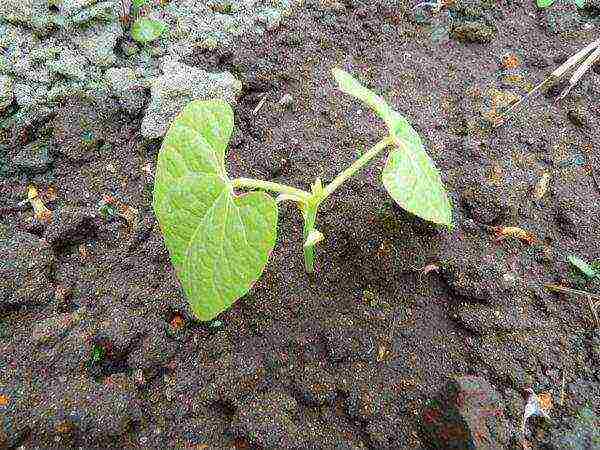
What top dressing to use in the garden
The culture is responsive to fertilizers. After preparing the soil for planting, you will need to make at least 3 dressings.
The first procedure is performed 3-4 weeks after germination. It is ideal to use a complex fertilizer rich in nitrogen and phosphorus. Superphosphate is also suitable at the rate of 30-40 grams per 1 m2.
After 3 weeks, you need to feed a second time, this is necessary for the formation of fruits (10-15 grams of potassium salt per 1 m2). The third time the nutrients are administered after 3 weeks.
Pests and prevention
Beans are one of the few crops that do not attack pests... Only slugs can appear.
Their invasion can be prevented by timely weeding, since weeds grow and create a favorable habitat for parasites. If slugs are found, you can set several traps, from which you need to periodically remove insects for disposal.
The correct timing of harvesting in the country or in the garden
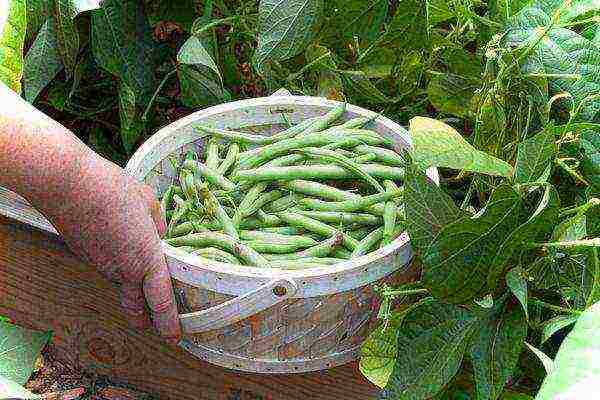
Harvest time depend on varieties and types culture. Asparagus beans should not be overexposed in the beds, as the product loses its value when dried.
If you plan to preserve the legume crop, then you can use any unripe fruits. But for winter preparations, it is better to wait for the pods to dry. The main thing is not to be late, so as not to collect beans from the ground later.
You should not pluck all the pods at the same time on the same day if there are completely dry and greenish ones among them. In the shade of its own tops, some ovaries could develop weaker, it is better to leave them to ripen.
To quickly extract the beans from their "houses" it is not at all necessary to sort each one by hand. The stick will do the job, you can knock out the harvested crop.
To do this, exclusively dried pods are laid out on the bedspread, along which with moderate effort you need to walk with a simple tool. It remains only to remove the dry part of the beans. The selected beans are still being dried and only after sorting are they sent for storage.
The agricultural technology of beans is simple, even a novice gardener can sow and grow it in the Moscow region, in the Ukraine, the Urals or Belarus. By completing all the procedures in a timely manner, preparations for the winter are provided with an incredibly healthy and nutritious product, which also diversifies the menu.
